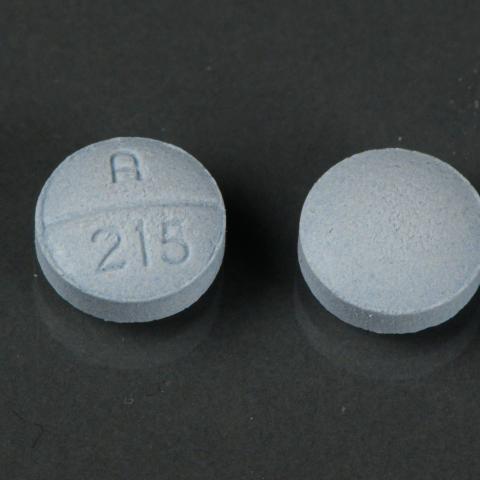Discovering the Numerous Clinical Uses and Effects of Oxycodone suffering Monitoring
Oxycodone, a potent opioid analgesic, has long been a cornerstone in the administration of moderate to extreme pain. Its effectiveness in relieving numerous sorts of pain has made it a vital device for doctor. Nonetheless, the intricacies surrounding its medical uses and effects exceed plain discomfort relief. Understanding the detailed interaction in between oxycodone, the body, and the potential effects of its administration is crucial for both medical care specialists and individuals alike. Let's untangle the complex landscape of oxycodone in discomfort administration to gain a comprehensive understanding into its utility and influence.

Pain Alleviation Device of Oxycodone
By binding to these receptors, oxycodone alters the understanding of discomfort, leading to a decrease in discomfort feeling. This activation prevents the launch of neurotransmitters included in discomfort signaling, such as material P and glutamate, while likewise advertising the release of repressive natural chemicals like gamma-aminobutyric acid (GABA)
Moreover, oxycodone not just regulates discomfort understanding yet also affects psychological actions to pain. The drug can cause feelings of ecstasy and leisure, adding to its high capacity for misuse. Recognizing the precise system of oxycodone's action on the main nerves is important for medical care providers to optimize its use in pain administration while lessening the threats linked with its capacity for addiction and abuse.
Kinds Of Discomfort Problems Dealt With
In the realm of pain monitoring, numerous kinds of discomfort conditions take advantage of the targeted analgesic results of drugs such as oxycodone. Oxycodone is typically prescribed for the therapy of modest to severe discomfort, making it a valuable device in handling severe pain adhering to surgical treatments, injuries, or clinical treatments. Furthermore, oxycodone is made use of in persistent pain conditions such as cancer-related pain, neuropathic discomfort, and musculoskeletal discomfort problems like osteoarthritis or fibromyalgia.
Moreover, oxycodone is reliable in managing innovation discomfort episodes in clients currently on 24/7 opioid treatment. Advancement pain describes unexpected, extreme flares of pain that occur despite recurring discomfort monitoring. By offering rapid discomfort relief, oxycodone helps boost the high quality of life for individuals dealing with problems like cancer cells, where discomfort control is important for total health.
In palliative treatment settings, oxycodone plays a vital role in making sure convenience and self-respect for terminally sick individuals experiencing serious discomfort. Its effectiveness and flexibility in application make it an important alternative for tailoring discomfort management to specific patient requires across a range of discomfort problems.
Possible Side Results and Threats
Frequently observed in people using medicines for discomfort monitoring, potential negative effects and threats associated with these treatments need cautious consideration and surveillance by doctor. Oxycodone, a powerful opioid generally recommended for moderate to serious pain, can bring about different negative effects. Typical adverse effects of oxycodone consist of irregularity, lightheadedness, queasiness, and drowsiness. These effects are often workable yet can be bothersome for individuals. Sometimes, more major side impacts such as respiratory system clinical depression, allergies, and dependency may take place, calling for immediate clinical interest.
Moreover, the lasting use of oxycodone can cause resistance, where greater dosages are required to accomplish the same level of pain relief. This can potentially boost article source the threat of overdose and dependency - Buy Oxycodone online. Individuals with a history important abuse or mental wellness problems go to a higher danger of experiencing these negative impacts
Doctor must very carefully evaluate the threats and advantages of oxycodone treatment for each specific client and monitor them carefully to decrease prospective negative effects and threats connected with its use.
Dose Guidelines and Administration
Offered the potential side impacts and threats connected with opioid medications like oxycodone, health care suppliers must establish look what i found clear dose standards and proper administration methods to ensure risk-free and efficient discomfort monitoring for patients. The dosage of oxycodone need to be individualized based on aspects such as the patient's age, weight, case history, and the seriousness of pain. Usually, the preliminary dose for opioid-naïve people is 5-15 mg every 4 to 6 hours as required for discomfort. It is essential to begin with the cheapest reliable dosage and titrate slowly to attain adequate discomfort alleviation while lessening adverse effects.
Medical care carriers must regularly reassess the client's discomfort levels and adjust the dose appropriately. It is vital to check for indications of opioid misuse or dependence throughout therapy. Oxycodone is frequently offered in immediate-release and extended-release formulations, and the application timetables differ between both. Individuals should be informed on the appropriate administration techniques, possible adverse effects, and the importance of not exceeding the recommended dose to stop damaging results.

Patient Education and Tracking
People suggested oxycodone for discomfort monitoring should receive detailed education on YOURURL.com appropriate medicine use and should go through routine surveillance to guarantee secure and effective treatment end results. Person education and learning plays an important duty in the safe use of oxycodone, as it empowers people to recognize the medicine's potential advantages, threats, and side results.
Regular surveillance is necessary to assess the client's feedback to oxycodone therapy, determine any type of arising adverse effects or issues, and assess the need for dosage modifications. This monitoring might consist of regular follow-up appointments, urine medication screenings to keep an eye on adherence and identify potential misuse, and regular reviews of the therapy plan to guarantee optimal discomfort management end results while minimizing the risk of opioid-related damage. By offering thorough education and implementing routine monitoring protocols, doctor can promote the efficient and secure usage of oxycodone suffering monitoring.
Final Thought
Finally, oxycodone is a powerful opioid medication frequently made use of in pain monitoring for numerous conditions. Its system of activity involves binding to opioid receptors in the mind and spinal cable to ease discomfort. While reliable in giving discomfort alleviation, oxycodone is related to potential side results and dangers, necessitating careful dose guidelines, management, patient education and learning, and checking to guarantee effective and safe usage in clinical technique.
In the realm of discomfort administration, different kinds of discomfort problems profit from the targeted analgesic impacts of medicines such as oxycodone. Oxycodone is generally prescribed for the therapy of moderate to extreme discomfort, making it a useful device in managing severe pain following surgical treatments, injuries, or medical procedures. Additionally, oxycodone is used in chronic pain conditions such as cancer-related pain, neuropathic pain, and musculoskeletal pain disorders like osteoarthritis or fibromyalgia.
Breakthrough pain refers to abrupt, extreme flares of discomfort that take place regardless of continuous pain monitoring. By giving quick discomfort alleviation, oxycodone helps improve the high quality of life for people enduring from conditions like cancer cells, where discomfort control is essential for overall well-being.